
Uros Floating Islands Peru: The Living Cultural Heritage | Travel Blog
Within the azure waters of Lake Titicaca, the Uros Floating Islands Peru are a marvel of human ingenuity. These man-made islands, home to the Uros people, are a testament to an ancient culture.
Constructed from totora reeds, the islands are a living cultural heritage site. They offer a unique glimpse into a way of life that has thrived for centuries. The Uros people have ingeniously adapted to their environment, using the same reeds to build their homes, boats, and even furniture.
Visiting the Uros Floating Islands is like stepping into another world. A world where tradition and modernity coexist, where solar panels sit atop reed houses, and where the barter system is still in practice. It's a place where the rhythm of life is dictated by the ebb and flow of the lake.
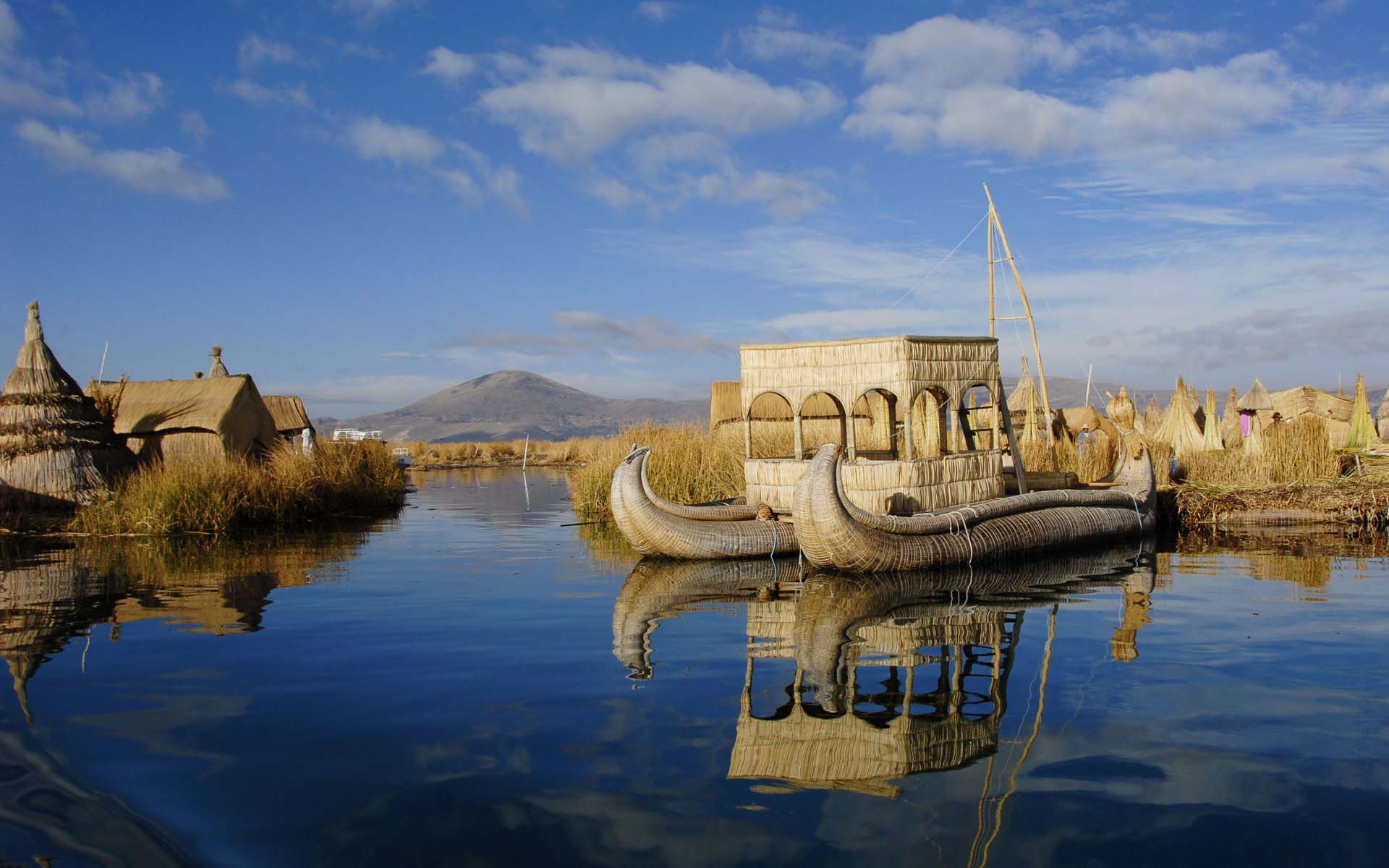
But the Uros Floating Islands are more than just a tourist destination. They are a symbol of resilience, a community's determination to preserve their way of life in the face of modern challenges. They are a testament to sustainable living, a model for communities worldwide.
In this article, we delve into the fascinating world of the Uros Floating Islands. We explore their history, their culture, and the unique experiences they offer. We also discuss the importance of sustainable tourism in preserving this living cultural heritage.
Join us on this journey to the Uros Floating Islands, a place where the past and present merge, where culture comes alive, and where every visitor leaves with a deeper understanding of humanity's relationship with nature.
Table of content
- The Enigmatic Uros Floating Islands: A Brief Overview
- The Historical Tapestry of the Uros People
- The Ingenious Construction of the Floating Islands
- Daily Life on the Uros Floating Islands
- Cultural Traditions and Practices of the Uros
- Sustainable Tourism and the Uros Community
- Experiencing the Uros Floating Islands: Travel Tips and Tours
- The Challenges and Future of the Uros Floating Islands
- Preserving the Living Cultural Heritage
The Enigmatic Uros Floating Islands: A Brief Overview
The Uros Floating Islands, a collection of around 120 islands, lie amidst the shimmering waters of Lake Titicaca. Lake Titicaca itself claims the title of the highest navigable lake worldwide. The islands are a stunning example of human adaptability and environmental harmony.
Constructed entirely from totora reeds, these islands showcase the resourcefulness of the Uros people. The reeds grow abundantly in the shallows, providing material for island construction and daily necessities. Layering the reeds allows the islands to float while remaining securely anchored to the lake bed.
The Uros people have inhabited these islands for generations, preserving a way of life deeply rooted in tradition. Their existence on these floating realms is a blend of history and innovation. Not only do the reeds construct homes and boats, but they also serve as fuel and even food.
Fishing and bird hunting constitute significant parts of the Uros's livelihoods. Furthermore, tourism has become a crucial source of income. Travelers from around the world are drawn to the islands, eager to experience their unique culture. The Uros community warmly welcomes visitors, sharing their heritage and way of life.
In essence, the Uros Floating Islands are a living testament to cultural resilience. They provide a window into pre-Columbian history while adapting to contemporary realities. As you explore these islands, you'll gain insights into a community thriving amidst challenges, keeping alive their customs and traditions.
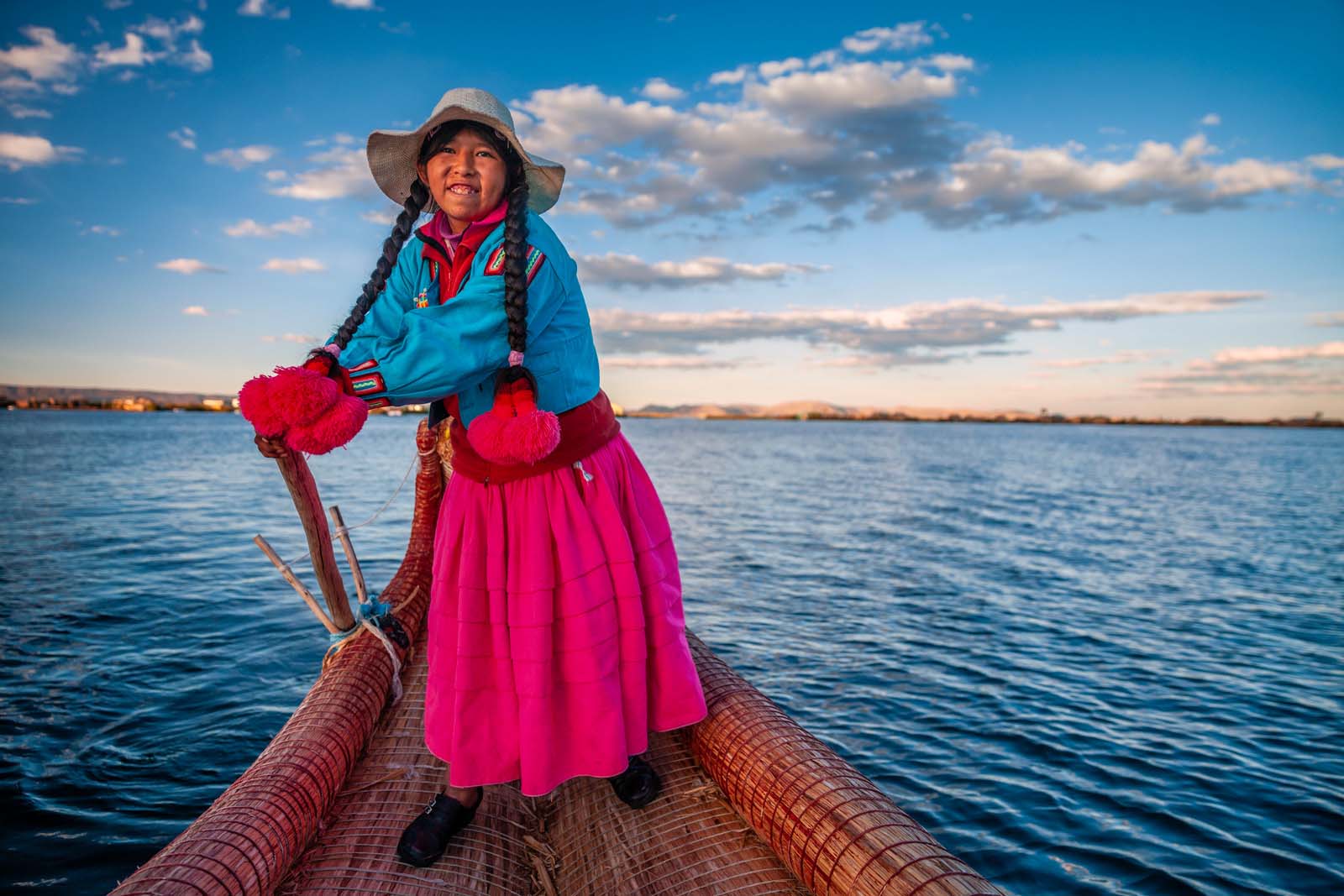
The Historical Tapestry of the Uros People
The history of the Uros people weaves a rich tapestry, full of resilience and tradition. Believed to predate the Inca civilization, the Uros have long occupied the Lake Titicaca region. This deep-rooted history grants them a unique cultural perspective.
Speaking Aymara, a native language of the Andes, the Uros maintain a vital aspect of their heritage. Their oral tradition includes stories passed down through generations, keeping ancient wisdom alive. These tales often tell of their origins and survival strategies.
The Uros’ decision to live on floating islands was strategic, offering protection against hostile tribes. By retreating to Lake Titicaca's open waters, they secured a haven. This adaptability illustrates their ingenuity in the face of adversity.
Traditional fishing techniques remain integral to the Uros way of life. Their profound understanding of Lake Titicaca's ecosystem enables sustainable fishing practices. Such knowledge reflects a balance between cultural norms and environmental stewardship.
In modern times, the Uros community faces challenges but remains a vibrant cultural entity. They navigate pressures of modernization while preserving their legacy. The historical tapestry of the Uros is complex, yet steadfast, continuing to inspire both residents and visitors alike.
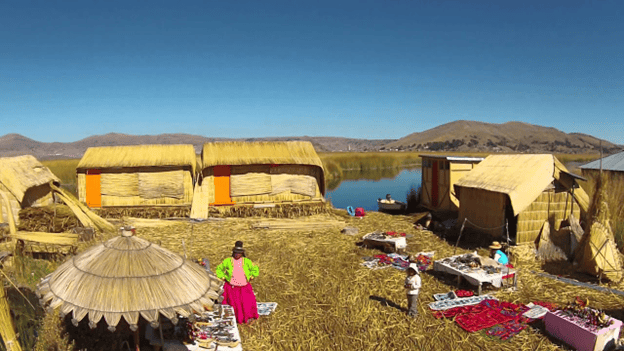
The Ingenious Construction of the Floating Islands
Constructing the Uros Floating Islands showcases human ingenuity. These islands rest atop dense layers of totora reeds. Totora grows abundantly in Lake Titicaca's shallows, providing essential resources.
The foundation begins with buoyant reed roots, forming the base layer. Several meters thick, this layer ensures stability and buoyancy. On top, fresh reeds are continuously added.
Reed maintenance is an ongoing process since they rot over time. Regular replacement keeps the surface dry and secure. This labor-intensive upkeep is crucial to the islands' longevity.
Structures on the islands use the same totora reeds. Homes, boats, and even furniture are made from this versatile plant. The result is a sustainable, self-reliant lifestyle.
To prevent drifting, the islands anchor to the lakebed using ropes tied to eucalyptus posts. This method allows the islands some movement without detachment from their location. Security and flexibility are vital for daily life.
This construction method demonstrates the resourcefulness of the Uros people. By adapting local materials, they’ve created a unique living environment. These floating islands serve as a testament to human creativity and survival.

Daily Life on the Uros Floating Islands
Life on the Uros Floating Islands revolves around Lake Titicaca's resources. Fishing and bird hunting are daily activities. These practices provide food and sustain the local economy.
The Uros people primarily eat fish from the lake. They also hunt birds that inhabit the area. Meals are simple yet nutritious, reflecting resourcefulness and adaptation.
Social structures remain strong within the community. A traditional system called "Ayni" governs work distribution. This system ensures island maintenance and community well-being.
Education holds significant importance for the Uros. The islands boast a primary school educating children in basic subjects. Lessons intertwine with native cultural practices and beliefs.
Tourism is a vital aspect of Uros life. Visitors experience homestays, observing daily routines and cultural practices. This interaction benefits both guests and locals by fostering mutual respect and understanding.

Cultural Traditions and Practices of the Uros
The Uros people have a rich cultural tapestry. Traditions are passed down through generations and remain vibrant today. Storytelling plays a crucial role in preserving history and legends.
Music and dance are integral to Uros traditions. Festivals celebrate the community's connection to Lake Titicaca and Pachamama, or Mother Earth. Traditional attire, worn during these celebrations, showcases their unique identity.
Handicrafts are another significant cultural facet. The Uros are renowned for their intricate reed weaving. Visitors can observe or purchase these beautifully crafted items.
The Uros speak Aymara, an ancient Andean language. Language carries great cultural significance and is vital for daily communication. Efforts to preserve Aymara are ongoing, highlighting the community's commitment to their heritage.
Community values emphasize unity and collaboration. Communal activities strengthen relationships and ensure survival. The Uros foster deep respect for their environment, reflecting their sustainable way of living.
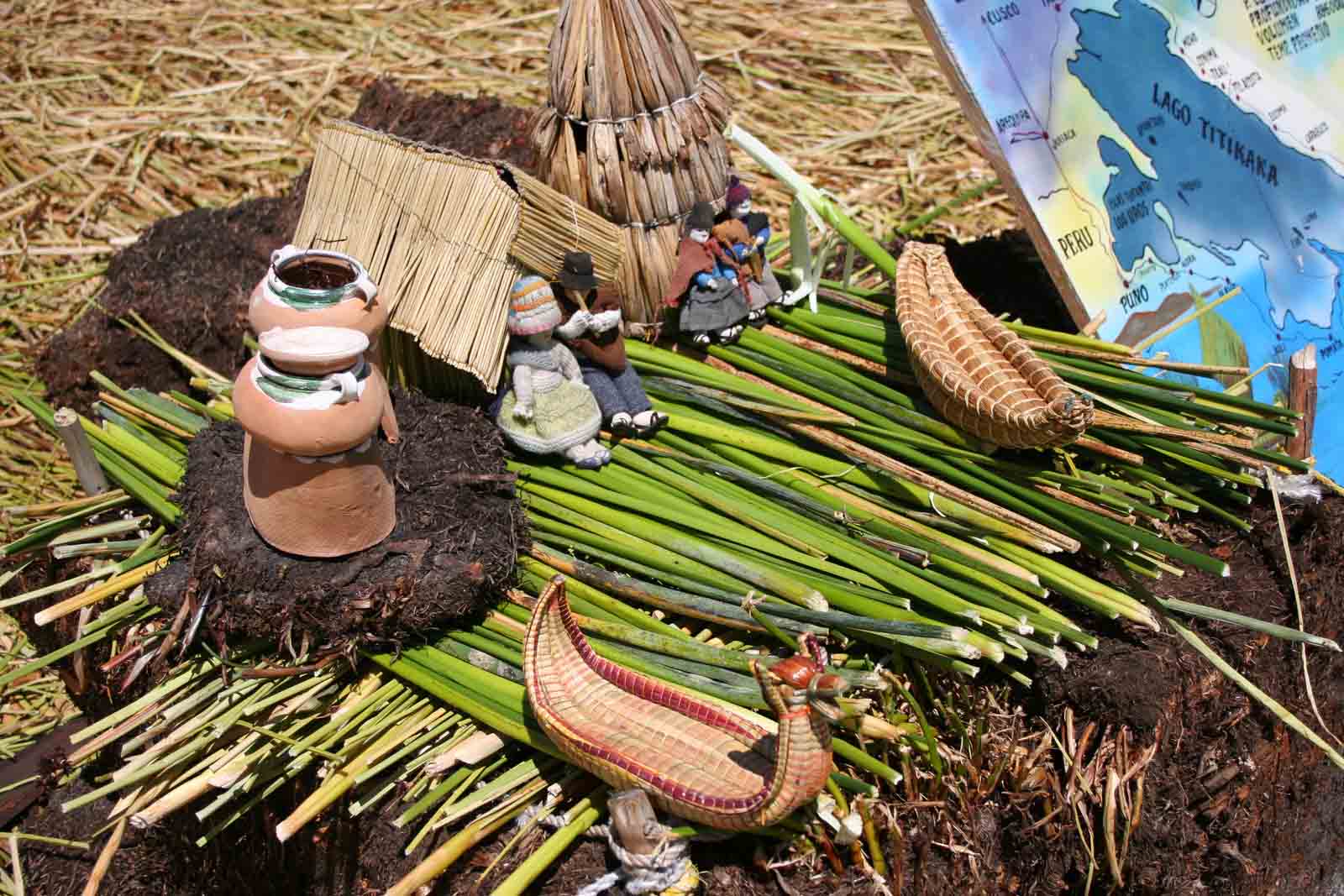
Sustainable Tourism and the Uros Community
Sustainable tourism plays a pivotal role in the Uros community. Tourism income helps preserve their cultural heritage and supports their economy. It encourages visitors to learn about alternative lifestyles.
The Uros people actively engage in conservation efforts. They focus on protecting Lake Titicaca's delicate ecosystem. These initiatives ensure the lake remains a valuable resource for future generations.
Tourist activities on the islands highlight a balance between experience and conservation. Visitors gain insights into Uros traditions without causing disruption. This approach fosters respect and awareness among travelers.
The Uros community collaborates with organizations to promote responsible tourism. They advocate for practices that benefit both the environment and their people. This commitment to sustainability serves as an inspiration for other cultures worldwide.
In the Uros community, tourism income supports their economy and cultural preservation, while also promoting awareness of their traditional lifestyle. Similarly, the Galapagos Islands rely heavily on eco-tourism to fund conservation efforts and protect their diverse wildlife.
However, the Uros community faces challenges related to climate change and modernization, which can impact their traditional way of life. In contrast, the Galapagos Islands deal with the pressures of invasive species and the environmental impact of tourism, necessitating strict regulations to manage visitor numbers and protect their fragile ecosystems.
Both regions highlight the importance of responsible tourism practices that benefit both the local communities and the environment.
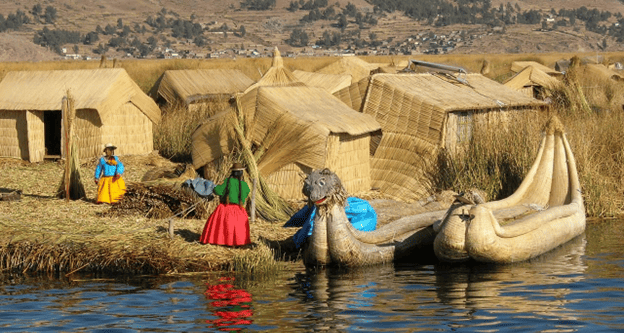
Experiencing the Uros Floating Islands: Travel Tips and Tours
Visiting the Uros Floating Islands offers a unique cultural immersion. Situated on Lake Titicaca, these islands provide an experience like no other. Travelers can witness firsthand the ingenuity of the Uros people.
Tours typically depart from Puno, the folkloric capital of Peru. Boat rides whisk visitors across the pristine waters of Lake Titicaca. Here, travelers are greeted by islanders eager to share their rich heritage.
Timing is crucial for an enriching visit. The dry season, from May to September, offers the best weather. It's essential to plan your tour around these months for optimal conditions.
While on the islands, tourists can choose from a variety of activities. Joining a guided tour helps maximize the experience. Visitors gain insights into the Uros lifestyle, architecture, and crafts.

Here are some useful travel tips for your visit:
- Book tours in advance, especially during peak season. Our specially curated Peru Jewels Tour transports you smoothly to the best of Uros without worries.
- Bring sun protection and layered clothing.
- Respect the local culture and traditions.
- Consider participating in a homestay for a deeper experience.
- Engage with locals and support their handicrafts by buying souvenirs.
Visiting the Uros Floating Islands isn't just a trip; it's an opportunity to connect with an ancient culture. Through interaction and understanding, this experience enriches the traveler and supports the Uros community.
At Voyagers travel, we offer you the opportunity to enjoy amazing destinations in Peru, such as Machu Picchu and Lake Titicaca. Enjoy the best of Peru with a top notch service.
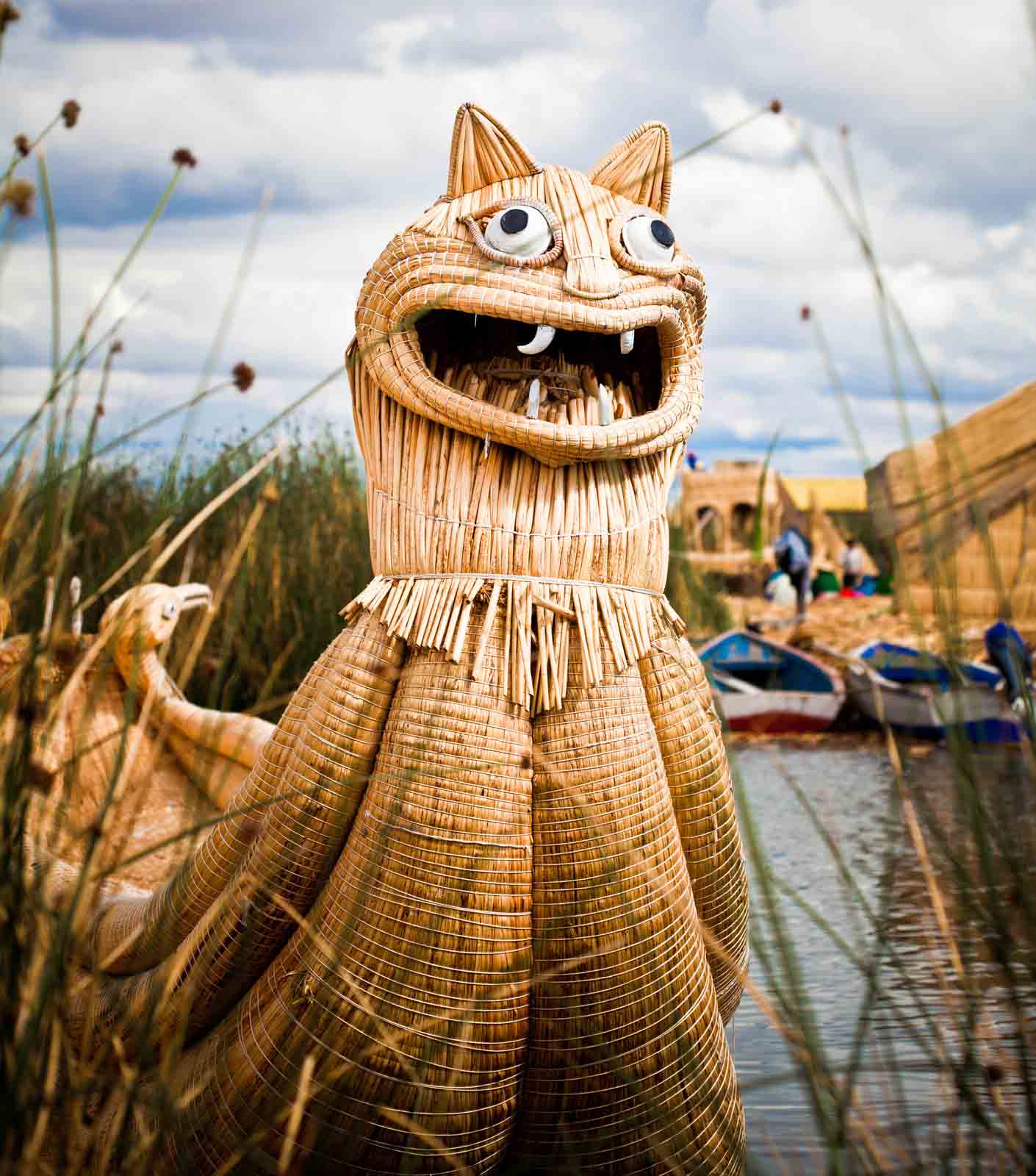
The Challenges and Future of the Uros Floating Islands
The Uros Floating Islands face numerous challenges today. Climate change poses a significant threat. Rising water levels and increased temperatures impact the reed beds crucial to their construction.
Additionally, the islands face the impacts of modernity. The Uros community is adapting while striving to preserve their cultural identity. Balancing tradition with contemporary influences remains a complex issue.
Tourism plays a vital role in their economy. However, managing the influx is critical. Over-tourism can strain resources and disrupt the serene environment that defines the Uros way of life.
Looking ahead, sustainable practices offer hope. The Uros are involved in conservation efforts for Lake Titicaca. By promoting eco-friendly tourism, they ensure that future generations inherit this unique cultural heritage. The islands’ perseverance stands as a testament to the resilience and resourcefulness of the Uros people.
Preserving the Living Cultural Heritage
The Uros Floating Islands exemplify cultural resilience and ingenuity. They are a testament to a harmonious existence with nature. Despite challenges, the Uros community remains dedicated to preserving their heritage.
Through sustainable tourism and adaptation, the islands thrive as a living museum. They invite visitors to experience a unique blend of past and present. This commitment ensures that the story of the Uros continues for generations to come.
Check Our Suggested Tours:
- Honeymoon In Peru - Peru Honeymoon Packages
- Peru By Belmond Tour
- From the Heart of the Jungle to the Sacred Mountain: A Luxury Expedition Through the Amazon & Ausangate 16d/15n
- The Soul of Two Worlds: A Grand Amazon & Andes Expedition 14d/13n
- Following the Path to the Sacred Sun Gate
- Family Adventure Tour

